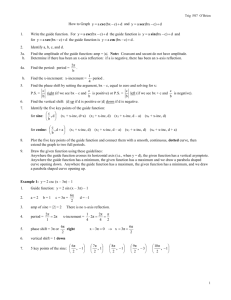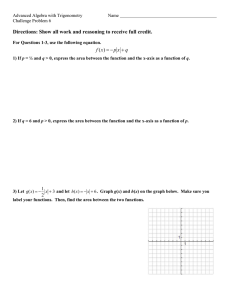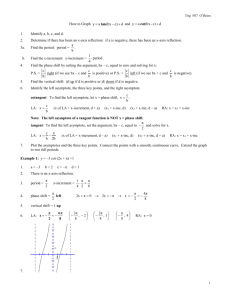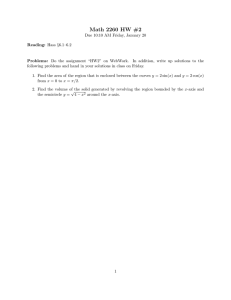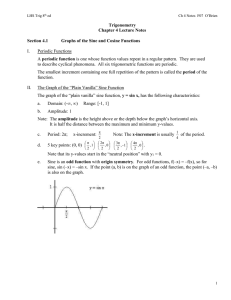d c) (bx
advertisement
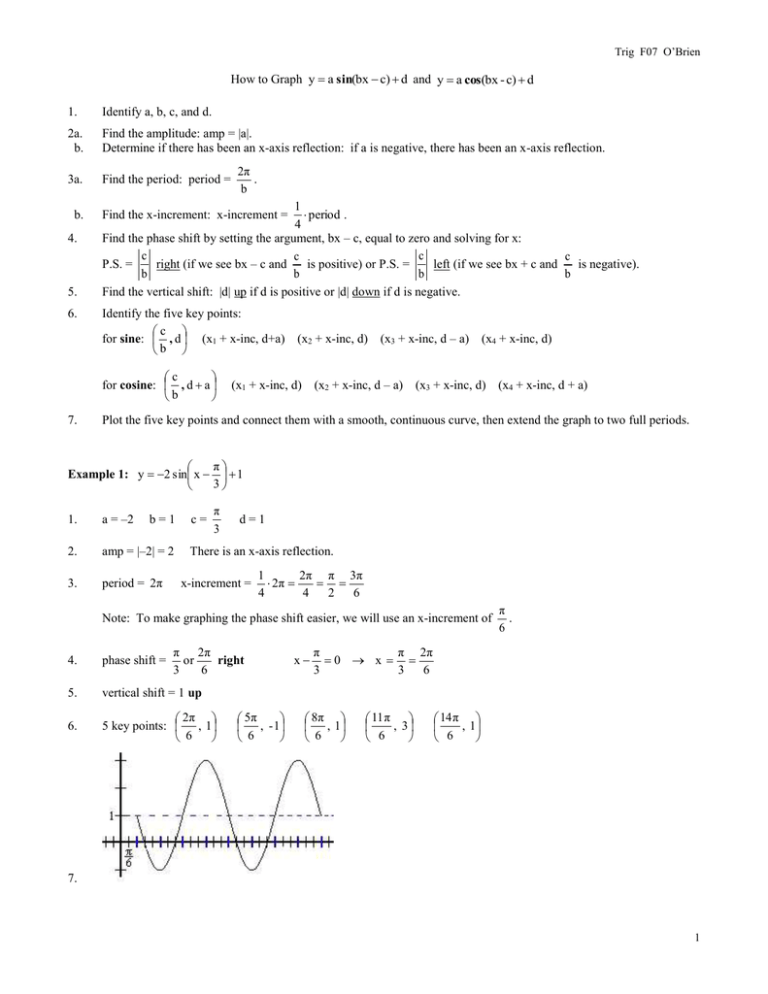
Trig F07 O’Brien How to Graph y a sin(bx c) d and y a cos (bx - c) d 1. Identify a, b, c, and d. 2a. b. Find the amplitude: amp = |a|. Determine if there has been an x-axis reflection: if a is negative, there has been an x-axis reflection. 3a. Find the period: period = b. 4. 5. 6. 1 period . 4 Find the phase shift by setting the argument, bx – c, equal to zero and solving for x: c c c c P.S. = right (if we see bx – c and is positive) or P.S. = left (if we see bx + c and is negative). b b b b Find the vertical shift: |d| up if d is positive or |d| down if d is negative. Find the x-increment: x-increment = Identify the five key points: c for sine: , d (x1 + x-inc, d+a) b c for cosine: , d a b 7. 2π . b (x2 + x-inc, d) (x3 + x-inc, d – a) (x2 + x-inc, d – a) (x1 + x-inc, d) (x4 + x-inc, d) (x3 + x-inc, d) (x4 + x-inc, d + a) Plot the five key points and connect them with a smooth, continuous curve, then extend the graph to two full periods. π Example 1: y 2 sin x 1 3 1. a = –2 2. amp = |–2| = 2 3. period = 2π b=1 c= π 3 d=1 There is an x-axis reflection. x-increment = 1 2π π 3π 2π 4 4 2 6 Note: To make graphing the phase shift easier, we will use an x-increment of π 2π or right 3 6 4. phase shift = 5. vertical shift = 1 up 6. 2π 5 key points: , 1 6 5π , - 1 6 x π . 6 π π 2π 0 x 3 3 6 8π , 1 6 11π , 3 6 14π , 1 6 7. 1 Trig F07 O’Brien Example 2: y = 1 cos (4x + π) – 2 3 1. a= 1 3 b=4 2. amp = 1 1 = 3 3 3. period = 4. phase shift = 5. vertical shift = 2 or 6. 5 2π , 5 key points: 3 8 c = –π d = –2 = – 6 3 There is no x-axis reflection. 2π π 4 2 x-increment = π 2π or left 8 4 1 π π 4 2 8 4x π 0 4x π x π 2π 4 8 6 down 3 6 π , 3 8 7 0, 3 6 π , 3 8 5 2π , 3 8 7. 2
